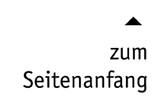|
|
 |
|||||||||||
|
|
Space In Danish Sign Language.The Meaning and Morphosynthax of the Use of Space in a Visual LanguageIn sign language research, a tradition has developed of distinguishing two different uses of space: space used for expressing agreement in ‘spatialized syntax‘, and space used for expressing locative relations, ‘spatial mapping‘. The difference is reflected in the categorization of verbs as, respectively, agreement verbs and spatial-locative (in particular classifier) verbs. Space in Danish Sign Language questions this difference if understood as a strict dichotomy. The two uses of space are related and represent extremes on a continuum. Danish Sign Language uses spatial means to express such factors as locative relations, transitivity, and point of view, but there is no absolute distinction between locative and transitive constructions. One of the main aims of the book is to examine the notion of ,locus‘. Loci are intrinsic to sign languages, and play a part at the morphological and syntactic levels, as well as at that of discourse. But loci as defined in relation to sign language do not occur in spoken language as they totally depend on the use of space as a means of expressing linguistic meaning. In the course of examining how space is used in Danish Sign Language, Space in Danish Sign Language describes and discusses such phenomena as judgements of grammaticality, locus from a formal point of view, conventions influencing the frame of reference, time lines, locus and referentiality, shifted reference, shifted locus, shifted attribution of expressive elements, pointing signs, person in pronouns, referent tracking, morphological modification for distribution,types of agreement contexts, point of view marking, and polymorphemic verbs. Through numerous examples from spoken languages, functional/typological parallels between signed and spoken languages are pointed out. But it is also claimed that there are fundamental differences between signed and spoken languages because of the differences in expressive means. Space in Danish Sign Language introduces the concept of ,referent projection‘, a cognitively central concept, which plays a vital part in the formal as well as the semantic description of sign languages. Through the study of such projections, sign language research can contribute significantly to the linguistic study of cognition. Engberg- Pedersen, Elisabeth : Space In Danish Sign Language. The Meaning and Morphosynthax of the Use of Space in a Visual Language. Geb. / Hardcover, 406 Seiten, Signum 1993, ISBN 3-927731-45-5. EUR 25,56 |
|||||||||||
 |
Erhältlich über jede Buchhandlung. Oder bestellen Sie diesen Titel schriftlich oder telefonisch direkt beim Signum Verlag. |